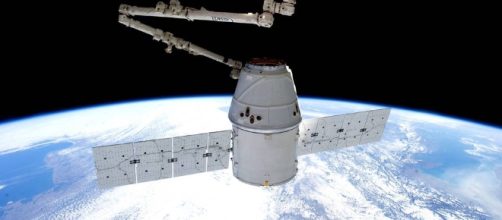The journey started four days ago at the Kennedy Space Center when the Falcon 9 rocket blasted off. This launch was a historic moment for Elon Musk and SpaceX because from this location the rockets for their Moon mission were launched. The Kennedy Space Center previously was closed in 2011 when NASA retired its fleet. The Dragon was mounted on top of the Falcon 9 rocket, presenting two main compartments.
Equipment and supplies delivered
One pressurized compartment contained 3,150 pounds of supplies and equipment. This section is accessible to the crew and includes 580 pounds of food and clothing, 842 pounds of spare parts and other vehicle hardware and more than 1,600 pounds of science gear.
Also within this compartment, twenty mice are housed in a rodent habitat so the scientists can learn more about bone regeneration and healing. The other compartment of the Dragon cargo ship is unpressurized and holds 2,100 pounds of equipment including a $92 million ozone monitoring instrument and a $7 million sensor to monitor lighting strikes.
Wrong GPS configuration
Four days ago, all seemed to be running within the parameters, but the on-board computer of the Dragon detected a navigation glitch.The computer has followed the protocol and the ship aborted the first warning, thus the SpaceX's flight controllers in Hawthorne, California were able to correct the glitch and planned a second rendezvous one day later.
The second rendezvous was successful and the robot arm operated by the astronaut Thomas Pesquet locked the capsule at 5:44 A.M. EST (GMT-5). After the Dragon ship was secured, flight controllers at the Johnson Space Center in Houston took over arm operations and complete the docking operation.
Successful team effort
In the meantime, a Russian Progress supply ship was continuing its own approach to the international space station.
The Progress MS-05/66P spacecraft was launched from the Baikonur Cosmodrome in Kazakstan on Wednesday and it is planned to dock Friday at 3:34 A.M. These supply missions are key to the activity of the International Space Station and thanks to the excellent co-operation between several countries and the constant effort of many dedicated people.
Now the real challenge will occur, the astronauts on the ISS will conduct experiments with the new science gear. Hopefully, after these new experiments, we will learn more about space and develop new technologies.

